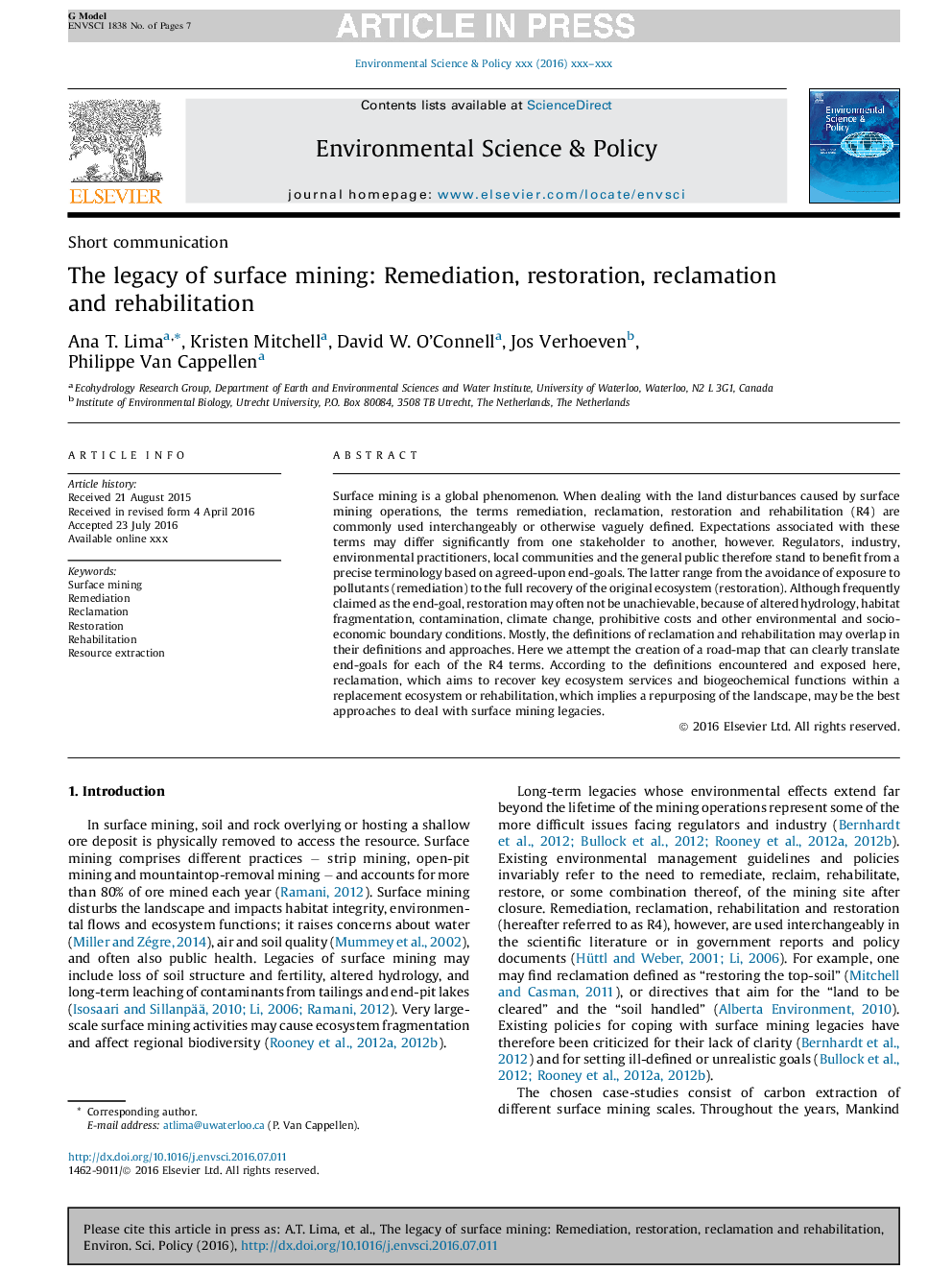| Article ID | Journal | Published Year | Pages | File Type |
|---|---|---|---|---|
| 7466629 | Environmental Science & Policy | 2016 | 7 Pages |
Abstract
Surface mining is a global phenomenon. When dealing with the land disturbances caused by surface mining operations, the terms remediation, reclamation, restoration and rehabilitation (R4) are commonly used interchangeably or otherwise vaguely defined. Expectations associated with these terms may differ significantly from one stakeholder to another, however. Regulators, industry, environmental practitioners, local communities and the general public therefore stand to benefit from a precise terminology based on agreed-upon end-goals. The latter range from the avoidance of exposure to pollutants (remediation) to the full recovery of the original ecosystem (restoration). Although frequently claimed as the end-goal, restoration may often not be unachievable, because of altered hydrology, habitat fragmentation, contamination, climate change, prohibitive costs and other environmental and socio-economic boundary conditions. Mostly, the definitions of reclamation and rehabilitation may overlap in their definitions and approaches. Here we attempt the creation of a road-map that can clearly translate end-goals for each of the R4 terms. According to the definitions encountered and exposed here, reclamation, which aims to recover key ecosystem services and biogeochemical functions within a replacement ecosystem or rehabilitation, which implies a repurposing of the landscape, may be the best approaches to deal with surface mining legacies.
Related Topics
Physical Sciences and Engineering
Energy
Renewable Energy, Sustainability and the Environment
Authors
Ana T. Lima, Kristen Mitchell, David W. O'Connell, Jos Verhoeven, Philippe Van Cappellen,
